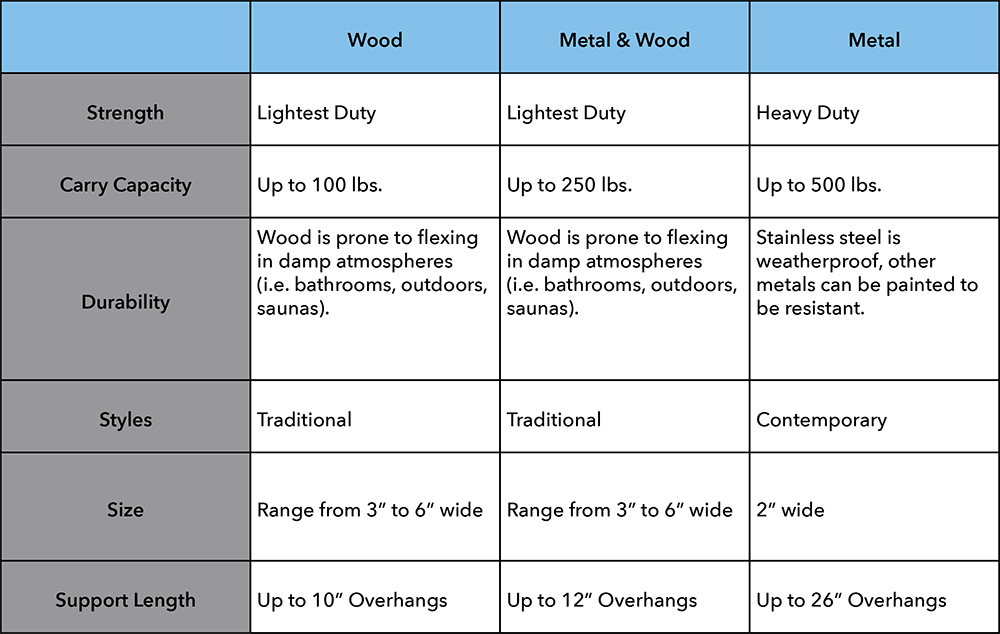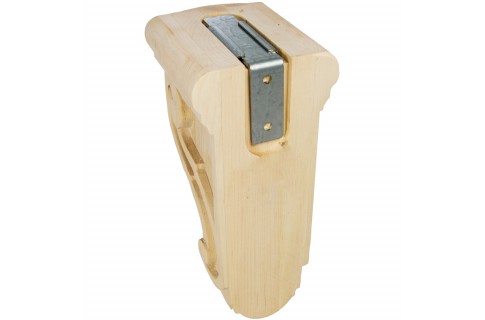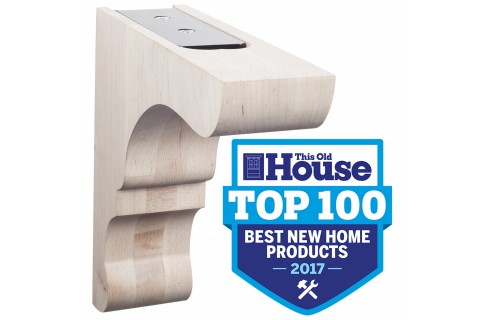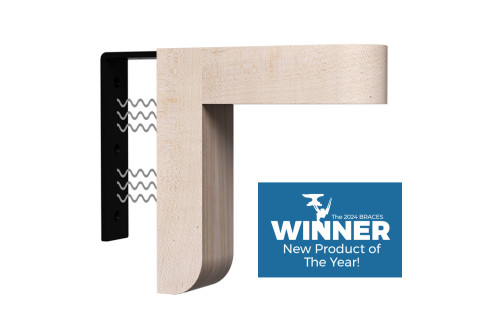Metal Brackets vs. Wood Corbels
It’s a consistent debate in the design world. Wood or metal? What are the benefits of each and what are their drawbacks? When it comes to supports this question is particularly poignant, as metal brackets or legs provide a completely different look than wood corbels and legs. How did this differentiation evolve and how does it affect how we use these elements in design?
Corbels were first used for structural support, but throughout the ages, they have also become a decorative and are now being used as a transitional element of household design. Whether for something as hefty and complex as buttressing the cornerstone of a cathedral or as a slight design element beneath a slim countertop, wood and stone corbels have been an essential element for years.
The question is, when should you use wood corbels over metal? Does each type affect weight capacity, mobility and ease of installation differently? We asked a few experts on the design, manufacturing, and engineering of these products to weigh in.
Define the Differences:
- Size: Inviting Home, a source for a variety of decorative home accents, phrased it perfectly: “The key difference between wood corbels and metal brackets is their width; corbels are generally thicker than brackets. In fact, some wood corbels are as deep as they are wide, while metal brackets are often two, three or even four times as deep as wide.“
- Strength: Wood corbels do not have the same weight-bearing capacity as metal brackets, which, if designed and manufactured properly, can have a carrying capacity of up to 500 pounds. Wood corbels alone are light duty, maintain very little weight, and are suggested to projects where almost all weight will be supported by the cabinet base. On the other hand, metal brackets, can maintain significant overhangs, allowing for a larger countertop or serving space.
If the applications is a lighter duty need, and any material could be used, it really comes down to preference.
- Wood: Osborne Wood, a leader in manufacturing wood corbels, is a strong advocate for wood, stating, “decorative wood corbels offer a tremendous versatility in design, with myriad possibilities for both the style of the carving and the subject itself.” With the malleability of wood, any design is possible - from gracefully curved scrolls to carvings of trees, flowers, and even animals.
- Metal: Design professionals at Urban Ironcraft are in favor of wrought iron or metal corbels. “Not only is iron stronger than wood, but it allows for patterns that are hardly practical with wood designs. [Metals] also compliment wood; it provides a beautiful contrast to an otherwise plain setting.”
- Metal & Wood: An alternative to those wanting a wooden look, but needing the weight-bearing capacities of a metal brace, is routing a wood corbel to fit a metal support system. This allows a seen, but unseen, level of support. The metal bracket will be disguised by the outer, more ornate wooden support, but providing a greater carry capacity while letting the style speak for itself.




